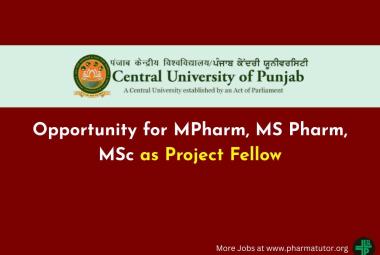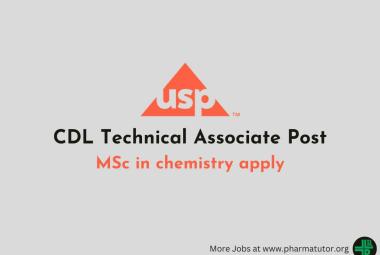{ DOWNLOAD AS PDF }
ABOUT AUTHORS:
Himangshu Sekhar Maji*, Debdutta Banerjee, Sushomasri Maji
Department of Pharmacy, Bengal School of Technology,
Sugandha, Delhi Road, Hooghly,
West Bengal, India
hsmaji77@gmail.com
ABSTRACT:
Lawsonia inermis(Henna Plant) has been used as herbal medicine for ages. In this study the antibacterial effect of ethanolic extract of Lawsonia inermis root against bacterial cultures of Vibrio cholera 156, Salmonella typhi 102, Shigella dysenteriae 2, Staphylococcus aureus ML 281, Escherichia coli Row, Shigella Flexneri 6430 Bcy, Bacillus polymyxa NCTC 4747, Vibrio cholera 2080, Salmonella typhi 642. The alcoholic extract was found to be more effective according to NCCLS agar dilution method.
REFERENCE ID: PHARMATUTOR-ART-2148
1. INTRODUCTION:
Recognition and development of herbal medicine offer treatment methods that are more environmentally benign, since they tend to be less toxic, produce fewer unanticipated side effects and do not trigger resistance. Use of herbal medicine is increasing in many segment of the population in India. The prolong use of synthetic drug may cause toxic effects. A number of traditional medicines all over the world are nowadays reevaluated by an extensive activity of research on different plant species[1].
Lawsonia inermis (lythraceae), commonly known as ‘henna’, is a flowering plant used since antiquity to dye skin, hair, fingernails, leather and wool. Henna is a tall shrub or small tree, 2.6m high[2, 3]. It is glabrous, multibranched with spine tipped branchlets. Leaves are opposite, entire, glabrous, subsessile, elliptical and broadly lanceolate, acuminate having depressed veins on the dorsal surface[4, 5]. The present study describes the detailed in vitro antimicrobial activity[6]of the root extract of Lawsonia inermis and thereby assisting the search for newer types of antimicrobial agents for solving difficult chemotherapeutic problems. Thus, the objective of the study is to find potential antibacterial property of the root of Lawsonia inermis and consequently to establish effective, available and low cost medicines of plant origin[7].
2. MATERIALS AND METHODS:
2.1 Collection of Plants: Fresh root of Lawsonia inermis was collected from nursery of Kolkata. The collected plant parts were identified and authenticated from Botanical Survey of India, Shibpur, Howrah, India and a voucher specimen was preserved.
2.2 Solvent Extraction: Thoroughly washed roots of Lawsonia inermiswere shade dried at room temperature for five days and then powdered with mechanical grinder and passed through 60-120 mesh. Approximately 50gms of shade dried powder was filled in the thimble and extracted successively with ethanol using soxhlation method.Solvents were recovered by distillation and ethanol extract were concentrated in reduced pressure below 400C in a rotary vacuum evaporator (Nutronix) to obtain the crude extract (20.12%). This was then preserved in 50C in air tight container until farther use.
2.3 Determination of MIC of the ethanol extract of L. inermis: The minimum inhibitory concentration (MIC) of the extract with respect to different test bacteria was accurately determined by agar dilution methods as described in the National Committee for Clinical Laboratory Standards[8, 9].
2.4 Growth and Maintenance of Test Micro-Organism for Antimicrobial Study: Bacterial cultures were obtained from the microbiology laboratory of Bengal school of Technology, West Bengal, India. The bacteria were maintained on Muller Hinton Broth (MHB) at 370C.
2.5 Preparation of the Stock Solution of the Extracts and Isolated Compounds: Desired amount of each of the extract of the root of Lawsonia inermiswas dissolved separately in 2% sterile CMC to prepare the stock solutions.
2.6 Preparation of Muller Hinton Agar Plates Containing Different Concentrations of the Extracts Required for Determination of MIC of the Extracts with respect to Different Bacteria: Measuredvolumes of stock solutions of the extracts and isolated compounds were individually added at concentrations of 0 (control), 1.25, 2.5, 5 and 10mg/ml in Muller-Hinton-Agar (MHA) and poured into sterile petri dishes (40 mm diameter)[10]. The pH of the media was adjusted to 7.4 before pouring.
For uniform diffusion of the extract throughout the medium, the agar plates containing extracts were refrigerated overnight and subsequently dried for 2 hours at 370C before use. Small squares were demarcated at the back of the agar containing portions of the plates with a marker to specify the actual location of each test organism[11].
2.7 Inoculum: The inoculums for determination of the sensitivity pattern consistedof one loopful of an overnight grown broth culture of the test organism. The average size of the inoculums was about 105 cells contained in a 2 mm diameter standard loop (2×105 CFU/ml; CFU: Colony Forming Units).
2.8 Spot Inoculation Method: When the Muller-Hinton-Agar (MHA) plates containing the extract and also the control plates having equal volumes of solvents wereready the overnight grown broth culture of each test organism was spot inoculated on the marked area of the plates. The plates were incubated at 370C, examined after 24hoursand incubated for further 24hours if necessary. No growth of the organism on the test plate along with growth on the control plate was taken as an indication of antibacterial activity of the extract. The readings were recorded in tabular form. Minimum Inhibitory
Concentration (MIC) was indicated by the lowest concentration of the extract which inhibited the bacterial growth[12, 1, 9].
2.9 Statistical Analysis: The MIC determination was performed in triplicate for each organism. Experimental results are mean ± standard deviation for three parallel measurements. Mean, standard deviation and correlation were computed by using Microsoft excel.
3. RESULTS
Screening the ethanolic extract of Lawsonia inermis against 10 known sensitive bacteria belonging to both Gram-positive and Gram negative genera showed powerful antimicrobial action against most of the tested bacteria.
Table 1: Effect of Lawsonia inermis on different bacteria
|
Bacterial Strains tested |
Growth in nutrient agar containing different concentrations of the extract (mg/ml) |
||||
|
10 |
5 |
2.5 |
1.25 |
0** |
|
|
Sh. dysentry(2) |
- |
- |
- |
+ |
+ |
|
S. typhi102 |
- |
+ |
+ |
+ |
+ |
|
S. typhi642 |
- |
+ |
+ |
+ |
+ |
|
V. cholera 156 |
- |
+ |
+ |
+ |
+ |
|
S. aureusML 281 |
- |
- |
+ |
+ |
+ |
|
E. coli Row |
- |
+ |
+ |
+ |
+ |
|
Sh. flexneri6430BCY |
- |
- |
+ |
+ |
+ |
|
B. polymyxa4747 |
- |
- |
+ |
+ |
+ |
|
V. cholera NCTC2080 |
- |
+ |
+ |
+ |
+ |
|
V. parahemolyticus |
- |
- |
- |
+ |
+ |
** Control plate without extract, +, growth; -, no growth
From Table 1 it can be seen that Shigella dysenteriae2was inhibited at the lowest 2.5mg/ml, while S. aureus, Shflexneri and B polymixa were inhibited at 5mg/ml concentration of the extract.All of the remaining bacteria were inhibited at a concentration of 10mg/ml (Figure 1)
Figure 1: The Plate Showing Zone of Inhibition In Culture of Sh. dysentery (2)
Result obtained in the present study revealed that the ethanolic extract of Lawsonia inermis root possess potential antibacterial activity and preliminary phytochemical tests of the extract concludes that the antibacterial activity of Lawsonia inermis might be due to presence of flavonoid (Maji et al., 2011) and alkaloid (Table 2).
Table 2: Phytochemical Screening for Ethanolic Extract of L.inermis
|
Chemical test for |
Name of test |
Observation |
Inference |
|
Tannins |
Ferric chloride test |
No change in colour |
Tannin is absent |
|
Chlorogenic acid test |
No green colour is developed |
||
|
Saponin Glycoside |
Froth formation test |
Foam appeared |
Saponin is present |
|
Steroid |
Salkowoski test |
Junctional red colour appeared and yellowish lower layer |
Steroid is present |
|
Protein |
Ninhydrine test |
No violet colour is produced |
Protein is absent |
|
Alkaloid |
Wagner’s test |
Reddish brown precipitate |
Alkaloid is present |
|
Hager’s test |
Yellow precipitate |
||
|
Mayer’s test |
No colour change |
||
|
Carbohydrate |
Molish test |
|
Carbohydrate is present |
|
Flavonoid |
Alkaline reagent test |
Yellow colour developed which turned colourless on addition of few drops of H2SO4 |
Flavonoid is present |
4. DISCUSSION
Plants are important source of potentially useful structure for development of new chemotherapeutic agents. The first step towards this goal is the antibacterial activity study. In the present study ethanolic root extract of Lawsonia inermis shows antimicrobial activity against Sh. Dysentery 2, S.Typhi 102, V.Cholera 156, S.Aureus ML 281, E.coli Row, Sh.Flexneri 6430BCY, B. PolymyxaNCTC4747, V.Cholariae 2080.The result of present investigation clearly indicate that the antibacterial activity vary with the species of the plants and plant material used. Thus the study ascertains the value of plants used in ayurveda, which could be of considerable interest to the development of new drug.
5. ACKNOWLEDGEMENT
The authors are thankful to Bengal School of Technology for providing all the necessary technical support to carry out the entire work.
6. REFERENCES
[1]H.S. Maji, S. Maji, K. Bhar, J. Chandra, M. Baral, P. Chakraborty, S.G. Dastidar, Anthelmintic, Free-Radical Scavenging Property and Potent Antibacterial Activity of Flavonoid Fraction Isolated from the Whole Plant of OldenlandiacorymbosaL. Int J Biomed Pharm Sci, 2011, 5(1) 43-48.
[2]H.S. Muhammad, S. Muhammad, The use of Lawsonia inermis Linn. (henna) in the management of burn wound infections, African J Biotech. 2005, 4(9) 934-937.
[3]B.P. Dinesh, R.S. Subhasree, Antimicrobial Activities of Lawsonia inermis - A Review, Academic Journal of Plant Sciences, 2009, 2(4) 231-232.
[4]C.K. Kokate, S.B. Gokhale, S. Purohit, Pharmacognosy 6th ed. NiraliPrakasan, India 255, 2007.
[5]S. Kumar, Y.V. Singh, M. Singh, "Agro-History, Uses, Ecology and Distribution of Henna (Lawsonia inermis L. syn. Alba Lam)" Henna: Cultivation, Improvement and Trade. Jodhpur: Central Arid Zone Research Institute, 2005, 11–12.
[6]K.K. Al-Rubiay, N.N. Jaber, B.H. Al-Mhaawe, K.L Alrubaiy, Antimicrobial Efficacy of Henna Extracts, Oman Med J. 2008, 23(4) 253-256.
[7]S.K Dutta, B.K Datta, M.A. Rashid, J.K. Kundu, A.S.S. Rouf, S.D. Sarkar, Isolation and structure elucidation of viscoazucine, a novel sesquiterpene from polygonumviscosum, Pharmazie, 2001, 56(7) 578-579.
[8]National Committee for Clinical Laboratory Standards, In: Performance Standards for Antimicrobial Disc Susceptibility Tests for Bacteria that Grow Aerobically, Approved Standard, M7-A6, NCCLS, Wayne, PA, 2003.
[9]S. Maji, H.S. Maji, P. Chakraborty, S.G. Dastidar, Potential of Dopamine Hydrochloride as a Novel Antimicrobial Agent, Int J Biomed Pharm Sci. 2010, 4(2) 70-75.
[10]E.W. Koneman, S.D. Allen, W.M. Janda, Koneman’s Colour Atlas and Textbook of Diagnostic Microbiology Ed. 6, Philadelphia, Lippincott Williams and Wilkins, 2006, 111-131.
[11]S.G. Dastidar, S. Debnath, K. Mazumdar, K. Ganguly, A.N. Chakrabarty,Triflupromazine: a microbicide non-antibiotic compound, ActaMicrobioletImmunol Hung. 2004, 51(1-2) 75-83.
[12]A. Dasgupta, S. Mukherjee, S. Chaki, S.G. Dastidar, O. Hendricks, J.E. Kristiansen, L. Amaral, Thioridazine protects the mouse from a virulent infection by Salmonella entericaserovarTyphimurium 74. Int J Antimicrob Ag, 2010, 35(2) 174-176.
|
PharmaTutor (ISSN: 2347 - 7881) Volume 2, Issue 4 Received On: 28/02/2014; Accepted On: 05/03/2014; Published On: 01/04/2014 How to cite this article: HS Maji, D Banerjee, S Maji, Evaluation of Antibacterial Activity of Ethanolic Extract of Lawsonia Inermis, PharmaTutor, 2014, 2(4), 133-136 |
NOW YOU CAN ALSO PUBLISH YOUR ARTICLE ONLINE.
SUBMIT YOUR ARTICLE/PROJECT AT articles@pharmatutor.org
Subscribe to Pharmatutor Alerts by Email
FIND OUT MORE ARTICLES AT OUR DATABASE









